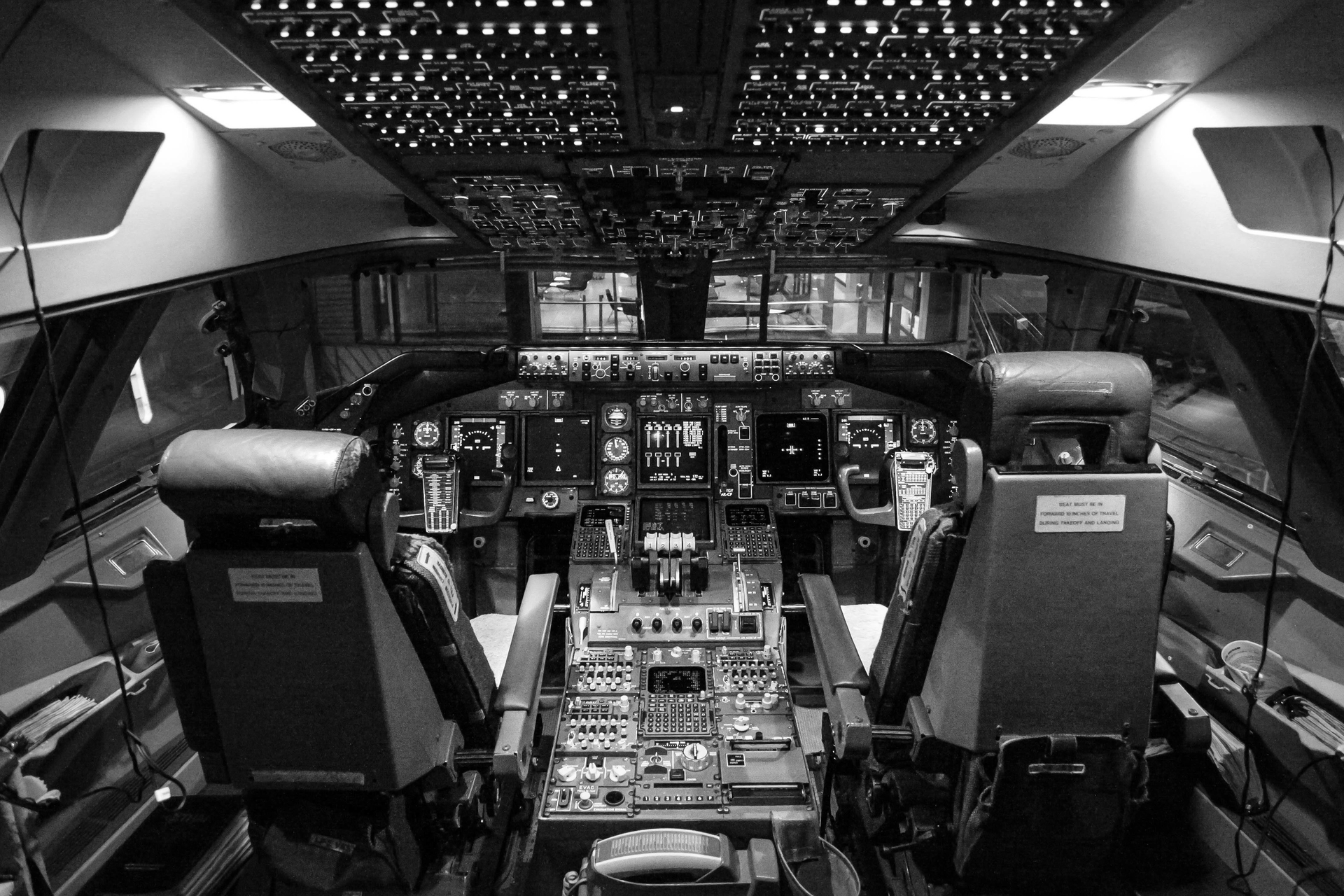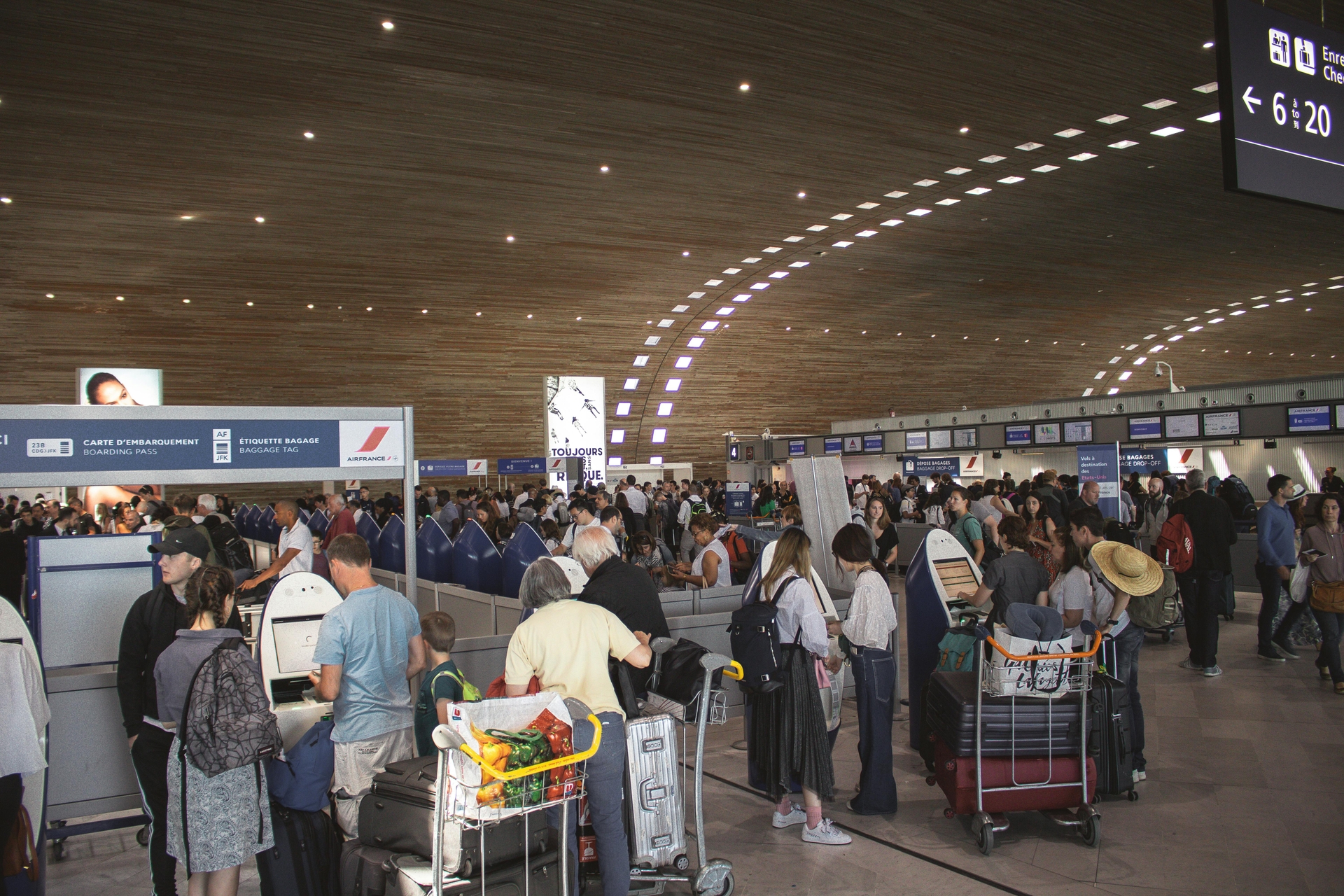
AeroGenie — Your Intelligent Copilot.
How AI Can Be Used for Dynamic Pricing in the Aviation Industry
September 23, 2025
Airlines are turning to AI for real-time fare adjustments—promising efficiency but raising concerns about fairness and transparency. From Delta’s experiments to regulatory pushback, discover how AI-driven dynamic pricing is reshaping aviation and what it means for passengers and the industry’s future.
Dynamic pricing has been part of the airline industry for decades. Ticket prices have always shifted based on demand, seasonality, and competition. But artificial intelligence (AI) is now pushing this model even further by introducing real-time, hyper-granular adjustments that could transform how much passengers pay.
Delta Air Lines has already begun using AI on a fraction of its domestic routes, aiming for one-fifth of all fares by year’s end (NPR). American Airlines, in contrast, has taken a more cautious stance, emphasizing the importance of consumer trust (Skift). The industry is divided, regulators are circling, and U.S. consumers are very uneasy.
This article explores how airlines are experimenting with AI-driven pricing, what it means for fairness and regulation, and how the aviation industry might strike a balance between profitability and transparency.
What is AI-driven dynamic pricing?
Dynamic pricing refers to adjusting prices in real time based on factors such as demand, supply, and timing. Airlines have long used yield management systems (YMSs) to raise or lower fares depending on how many seats were left on a flight or how close it was to departure.
AI adds a new layer of sophistication. Instead of static rules, AI systems analyze massive data sets to simulate a “super analyst” working around the clock (Fortune). These models consider not only booking windows and route popularity but also inputs such as weather disruptions, competitor activity, and even baggage history (NPR). The technology goes beyond traditional adjustments by finding price points tailored to narrower customer segments and real-time conditions.
In practice, this means two passengers booking the same flight at the same moment could still face different fares, depending on how the AI system interprets each traveler’s likelihood to pay. While airlines argue this is simply an extension of dynamic pricing, critics view it as a fundamental shift toward more opaque, algorithm-driven commerce.
How airlines are using AI for pricing today
Delta Air Lines has been the most vocal about AI’s role in its pricing. The airline’s system, powered in part by the Israeli startup Fetcherr, is already setting a few percent of all passenger fares with plans to expand to one-fifth by year’s end (Fortune). Delta has framed AI as a “super analyst” running simulations nonstop to optimize revenue.
The models weigh factors like advance purchase windows, route competitiveness, seasonal demand, weather, and class of service. Rather than manually tweaking price bands, algorithms surface fare adjustments in real time. This mirrors the dynamic pricing used in e-commerce or ride-hailing apps, where prices can change minute to minute depending on customer demand and other conditions. Airlines hope that by embracing this technology, they can unlock both greater efficiency and higher unit revenues.
Other carriers are experimenting quietly. United has adopted generative AI for operational tasks like messaging passengers during disruptions, while American Airlines has signaled caution about consumer-facing pricing changes. Still, the long-term trajectory suggests most global carriers will test algorithmic pricing models to remain competitive.
Consumer and regulatory backlash
The rollout of AI-driven pricing has sparked significant consumer anxiety. Critics describe the practice as “hacking our brains” in an attempt to push each traveler to their maximum pain point for ticket costs (Fortune). Travelers worry about paying more simply because algorithms interpret them as wealthier, frequent fliers, or last-minute buyers.
Lawmakers have also taken notice. U.S. senators pressed Delta Air Lines to clarify how its models use data, raising concerns that third-party sources such as financial status or biometric information that could eventually creep into pricing decisions (NPR).
Scholars at Harvard Law School warn that this kind of “surveillance pricing” deepens information inequality between consumers and companies, with algorithms holding far more insight into a traveler’s behavior than the traveler has into the algorithm’s logic (Harvard Law).
American Airlines, sensing the backlash, has publicly (albeit somewhat vaguely) stated it will not deploy AI pricing in ways that risk eroding customer trust (Skift). This divergence in approach highlights an ongoing industry debate: whether maximizing profitability through hyper-personalization is worth the reputational and regulatory risks.
Benefits for airlines
For carriers, the appeal of AI-driven dynamic pricing is straightforward: revenue optimization at scale. Delta has already reported “amazingly favorable unit revenues” from its early adoption pilot (Fortune). Algorithms can simulate millions of price scenarios in real time, enabling the airline to capture higher fares from travelers with a strong willingness to pay while still filling otherwise empty seats with lower offers.
AI also reduces reliance on manual revenue-management teams, which traditionally set fare buckets weeks in advance. Instead of static rules, Delta’s system continuously adapts to changes in demand, competitor pricing, and even disruptions like weather events. For airlines operating on thin margins, the promise of 20% savings and fivefold efficiency gains—results cited by SkySelect in aviation procurement (AviTrader)—signals the scale of value possible when AI is applied to commercial strategy.
Risks for passengers
The same algorithms that benefit airlines can create opacity and inequality for passengers. While companies like Delta insist that they are not using personal identifiers such as age, address, or income to set prices (NPR), the mere possibility of “surveillance pricing” alarms travelers and lawmakers. Harvard researchers warn that AI-powered systems can exploit personal data to push individuals toward their maximum “pain point” price, raising concerns of discrimination and unfairness (Harvard Law).
Consumer advocates point out that early tests of personalized pricing models have not favored vulnerable groups. In some cases, the best deals went to the wealthiest customers while the poorest were offered the highest fares (Fortune).
Without transparency or oversight, passengers face a system where the price is no longer anchored to a publicly visible market rate but to what an opaque algorithm believes they will tolerate. That erosion of trust could undermine long-term loyalty to airlines that lean too heavily on AI-driven pricing.
Comparisons to other industries
Dynamic pricing powered by AI isn’t unique to aviation. Ride-hailing, hotels, and e-commerce sites have long used similar techniques. Uber, for instance, normalizes surge pricing by adjusting fares in real time when demand spikes, and most travelers have come to accept and expect it. Hotels employ AI-driven yield management to anticipate seasonal demand and set rates accordingly. Even grocery and fast-food chains have adjusted menu prices based on location and time of day (Harvard Law).
What sets airlines apart is the combination of regulatory scrutiny and high emotional stakes. A slightly more expensive burger might not trigger outrage, but a $500 increase on a family’s vacation flight will. The stakes of air travel—being tied to holidays, family emergencies, and once-in-a-lifetime events—make transparency and fairness central to how passengers judge the practice. For aviation leaders who are taking cues from adjacent industries, AI pricing can be normalized—but carefully when dealing with high-stakes, high-emotion purchases.
Lessons from B2B vs. B2C models
Insights from B2B sectors highlight why AI-powered dynamic pricing is more controversial in consumer markets. In B2B industrial settings, dynamic pricing is often tied to transparent variables like commodity indices or capacity constraints, making it easier for buyers to accept adjustments (Simon-Kucher). But in consumer-facing industries, customers lack visibility into the inputs that drive price changes.
The “black box” nature of AI compounds this opacity. Businesses selling to professional buyers can justify shifts with data on market volatility, while airlines risk eroding trust if they cannot explain why one passenger paid hundreds more than another for the same seat.
This tension suggests that AI-driven pricing in aviation will need guardrails: explainability mechanisms, consumer-protection regulations, and communication strategies that reassure passengers that their personal characteristics are not being exploited. Without these safeguards, AI-driven pricing risks facing the same backlash that killed earlier attempts at “surveillance pricing”—like Orbitz showing Macbook users pricier rates (MarketWatch).
Ethical and regulatory concerns
The rise of AI-driven dynamic pricing has sparked an ongoing debate over fairness, transparency, and consumer protection. Critics argue that algorithms could unintentionally reinforce economic inequality if they draw on biased datasets or opaque inputs. For example, if an AI model infers a higher willingness to pay from a traveler’s ZIP code, it could disproportionately disadvantage lower-income passengers or certain demographics (Fortune).
Regulators are beginning to take notice. U.S. senators have pressed airlines like Delta for assurances that biometric, financial, or social media data won’t be folded into pricing models (NPR). Meanwhile, European frameworks on algorithmic transparency could eventually influence global aviation practices. The challenge is balancing AI’s commercial potential with safeguards that preserve consumer trust. If passengers perceive pricing as discriminatory, the reputational damage could outweigh any short-term revenue gains.
FAQs
Is it just Delta? What airlines use dynamic pricing?
No, Delta isn’t the only airline now experimenting with AI-driven dynamic pricing. Many other airlines are also leveraging this dynamic pricing technology (Fast Company, Fetcherr):
- Virgin Atlantic (U.K.): The British carrier partnered with Fetcherr to optimize pricing and inventory. Virgin has avoided major backlash so far by not marketing the move as “personalized pricing.” The airline has emphasized “efficiency” and “operational improvements” rather than individualized fares.Viva Aerobus (Mexico): Also working with Fetcherr on AI pricing. Like Virgin, it has not faced the kind of public or political scrutiny seen in the U.S., likely because there’s less regulatory and consumer watchdog attention on algorithmic pricing in its home market.
- WestJet (Canada): Using Fetcherr’s platform for pricing and inventory management. WestJet has similarly kept its messaging around “streamlining” and “optimization” rather than tailoring prices per passenger, which has helped avoid consumer pushback.
- Royal Air Maroc (Morocco): Another Fetcherr partner focused on efficiency and revenue optimization. Thus far, no significant backlash has been reported in Morocco.
By contrast, Delta Air Lines has faced the most backlash, especially from U.S. lawmakers and consumer advocates, because its disclosures about AI pricing coincided with growing public concern about behavior “surveillance pricing.”
Delta has repeatedly stressed that its system does not use personal data for individualized fares, only operational and market factors like seat availability, schedules, events, and oil prices.
What is the difference between dynamic pricing vs. surge pricing?
Surge pricing is a specific form of dynamic pricing. Both involve adjusting prices based on demand, but the difference lies in when and how prices rise.
Dynamic pricing is broader; it covers the ongoing fluctuations in airfare based on variables like seasonality, booking timing, or route popularity. Surge pricing, by contrast, refers to sharp, temporary price hikes that occur during periods of unusually high demand, like holidays or sudden spikes in bookings. In short, all surge pricing is dynamic pricing, but not all dynamic pricing is surge pricing (Forbes).
When did airlines start using dynamic pricing?
Airlines first adopted dynamic pricing in the wake of U.S. deregulation in 1978, which lifted government controls over passenger fares and allowed carriers to set their own prices (OAG). By 1983, companies like American Airlines pioneered yield management, a strategy that used booking patterns, demand forecasts, and competitive data to adjust ticket prices in real time.
Instead of charging every passenger the same flat rate, airlines began offering a range of fares that shifted based on when a traveler booked, how popular a route was, and the expected load factor. This marked the start of dynamic pricing as a way to maximize both seat occupancy and revenue.
Over time, the approach became increasingly sophisticated. What started as basic fare buckets and early-bird discounts has since evolved into algorithms that track dozens of variables, from seasonality to competitor pricing, to forecast what customers are willing to pay.
Today’s systems can update fares by the minute, far beyond what was possible with the legacy reservation tools of the 1980s. This long trajectory—from deregulation to yield management to advanced dynamic pricing—laid the groundwork for the AI-driven models that airlines are now testing, which promise even greater precision in matching fares to market demand (OAG).
Is dynamic pricing illegal?
No, dynamic pricing is legal as long as it complies with consumer protection laws. Airlines and other industries are allowed to adjust prices based on demand, timing, and market conditions.
What would cross into illegal territory is discriminatory pricing that charges different rates based on protected characteristics like race, gender, or ethnicity. Otherwise, fluctuating prices for the same seat or service are a standard, lawful practice (Forbes).
The future outlook for AI in aviation pricing
Despite controversy, AI-powered pricing is unlikely to fade. Airlines face relentless margin pressure, and AI offers a powerful lever for squeezing additional yield. Analysts expect deployment to expand far beyond early adopters like Delta, with international carriers and low-cost operators piloting their own systems (Harvard Law).
Future systems may combine predictive analytics, real-time demand monitoring, and generative AI copilots that suggest pricing strategies to revenue managers. PricewaterhouseCoopers (PwC) predicts AI will reshape the competitive pricing landscapes industry by industry, with leaders who embed it deeply into their strategies pulling ahead of laggards (PwC). For aviation, this could mean a future where “fair” prices are less relevant than “personalized” ones—a shift that fundamentally changes how consumers perceive value.
Ready to turn your customer and market data into smarter, more transparent pricing strategies? Connect with ePlaneAI to see how AI can help you balance profitability, efficiency, and passenger trust.
Aviation Maintenance Trends That May Gain Momentum in Uncertain Circumstances
Aircraft are staying in service longer, supply chains are a powder keg, and the tech is evolving overnight. Discover the maintenance trends gaining momentum and what they mean for operators trying to stay airborne and profitable.

October 2, 2025
Choosing the Right Aircraft Parts with Damage Tolerance Analysis
The future of aviation safety is all about the parts. Authentic, traceable parts bring optimal damage tolerance and performance to fleets for maximum safety and procurement efficiency.

September 30, 2025
How to Enter New Aviation Markets: The Complete Guide for Parts Suppliers
Breaking into new aviation markets? Learn how suppliers can analyze demand, manage PMA parts, and build airline trust. A complete guide for global growth.

September 25, 2025
5 Aviation Marketing Strategies You Should Use to Sell to Global Airlines
Airlines face shrinking margins and rising expectations. See how top strategies—dynamic offers, partnerships, personalization, and more—can close deals with global carriers.
